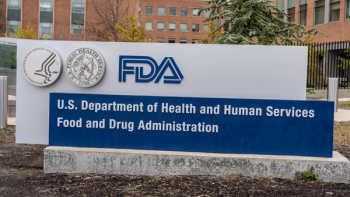
The Future of Cell and Gene Therapy
Each year, the success of cell and gene therapy becomes clearer, but what do we really know about it?
Each passing year, the success of cell and gene therapy (CGT) becomes clearer, more widely covered in the media, and is increasingly the focus of a rapidly growing society of researchers. Making sense of this extensive ecosystem is no small feat, but by using a data-driven approach, we can get closer to determining what the future holds for CGT.
CGT has emerged as one of the most exciting areas of biotechnology. Its buzz can be attributed to the hope these therapies hold for patients with rare and often deadly inherited diseases; the scientific promise and intrigue of gene editing; and the business opportunity that these revolutionary therapies with lucrative price tags hold.
But what do we really know about cell and gene therapy? What proverbial gold will be found at the end of this rainbow?
What we know
The plethora of medical conditions that cell and gene therapies are being evaluated for is ever expanding, however oncological disorders remain the most commonly explored. The recently awarded
The works of Dr. James P. Allison and Dr. Tasuku Honjo uncovered the role of checkpoint inhibitors in the body’s immune response to cancer. Checkpoint inhibitors work by re-engaging the checkpoints on T-Cells which are the cells within the immune system that fight cancer. When cancer cells shut down these checkpoints on T-Cells, they are unable to fight off the cancer cells.
Through their work, Allison and Honjo deciphered exactly how cells were interacting so they could fine-tune methods to recruit and control the immune system in fighting cancer. Their findings scientifically bolstered the foundation of a new principle for cancer treatments: immunotherapy.
Their work has led to a new class of drugs that has already resulted in lasting remission in several patients. The first drugs to make it to market based on the Nobel Prize winning research include Yervoy, Opdivo, and Keytruda. Dr. Allison discovered the checkpoint inhibitor CTLA-4 (the target of Yervoy) and Dr. Honjo discovered the checkpoint inhibitor PD-1 (the target of Opdivo and Keytruda).
Where we are today
Cell and gene therapy offers an almost unlimited source of innovation. These therapies offer personalization and show potential relevance across multiple conditions. Across most of the conditions being tested, competition is low despite an increasing amount of therapeutic potential and advanced maturity.
Making sense of this extensive ecosystem is no small feat, however by using the data-driven approach of exploring the cell and gene therapy space with
To prioritize opportunities, we’ve broken the ecosystem down using three key parameters:
- Therapeutic potential
The therapeutic potential of the cell and gene therapies being evaluated for treating the medical condition: this indicates how much preclinical and clinical scientific evidence exists and, more importantly, its growth rate and percentage of ‘positive’ signals, such as successful clinical trials
- Maturity
The maturity of the specific cell and gene therapies was evaluated for treating the medical condition: this provides insight into how close to market these solutions are. A launched drug is indicative of a mature solution, while a research paper indicates a less mature solution.
- Competitive landscape
How competitive the space is for treating this medical condition with cell and gene therapies: a dark red circle representing a specific medical condition has greater competition than a dark blue circle representing a specific medical condition.
We’ve mapped out four cohorts in which innovation is taking place:
- Saturated:
The first of which is the saturated space: the diseases and supporting therapies that have proven scientific value are at later development stages and have already garnered interest from entities in the space.
- Establishing:
Secondly, we have the establishing opportunities which are those that have already developed baseline confidence through scientific evidence and medium to high solution maturity. In this cohort, the level of competition varies, and this can be attributed to their being niche markets or for which scientific breakthroughs are still on the brink of discovery.
- Promising:
In the third cohort lie the promising opportunities: they are largely untapped in terms of competition; however, work remains to be done to establish their therapeutic potential and develop these solutions into later stage clinical entities.
- Nascent:
In the last cohort, for the brave at heart, you will find the very early, just begun exhibiting scientific potential.
Let’s explore what we can learn from this breakdown, and what are some of the most innovative efforts that will reach the market in the next 3-10 years.
Saturation: In response to the opioid public health crisis, there has been a natural shift towards newer, natural, and non-addictive alternatives for treating pain. Simultaneously, there is growing research into cell and gene therapy treatment options for patients with neuropathic pain who respond poorly to opioid and over-the-counter analgesics.
Of these recent innovations is a cell therapy targeted specifically for treating the pain experienced in musculoskeletal conditions, mostly osteoarthritis, by using mesenchymal stem cells (MSCs) from adipose tissue. These cells promote the body’s natural healing by reducing inflammation, promoting tissue repair and reducing scarring, and can relieve neuropathic pain when injected directly into an affected joint or tendon.
The Australian regenerative medicine company, Regeneus, is
Progenza differentiates itself from other MSC therapies since it includes cell secretions which improve the functionality of the MSCs post-thawing. In addition, the company claims that the use of MSCs from adipose tissue assists in scaling the manufacturing of
While more research is needed to establish that such an approach would also be applicable for solving the opioid crisis, early positive signals are emerging for the use of stem cells for opioid therapy,
Establishing: Innovations grouped in this cohort are projected to hit the market, if successful, within a 3-5-year period. Unsurprisingly, the majority of cell and gene therapies that are being explored here are for treating various types of cancers.
Hematological malignancies such as acute myelogenous leukemia, chronic lymphocytic leukemia, and myelodysplastic syndrome are more advanced and have attracted more attention from a competition perspective. Solid cancers are catching up with significant efforts being invested into developing cell and gene therapies for treating such conditions.
Huntington's Disease, a relatively rare genetic disease remains incurable, and this is despite the medical advances that have taken place in the neurological space. The disease is typically inherited and caused by an autosomal dominant mutation in either of an individual's two copies of a gene called Huntingtin (HTT). When mutated, the result is an abnormal protein which gradually damages cells in the brain.
Some of the key research efforts around this disease are targeted at establishing safe and efficient methods for lowering total or mutant HTT expression in the brain. One research group from Jinan University has been
Simultaneously,
Research into Huntington’s Disease is still developing; however, its development is sure to be supported by the growing body of research and grants focusing on cell and gene therapies for treating this rare disease.
Promising: This opportunity cohort is approximately 5-6 years away from reaching the market and comprises innovations at preclinical or very early phase 1 clinical trials. The top medical conditions being evaluated in this cohort include oncological disorders (such as endometrial cancer, CML, and soft tissue carcinoma), and immunological and infectious diseases (such as Sjogren’s syndrome, tuberculosis, HBV, and urinary tract infections) amongst others.
Of particular interest is the application of cell and gene therapies for treating cystic fibrosis (CF) patients who experience persistent lung infections, which limit their ability to breathe over time. In these patients, a defective gene causes a thick and sticky buildup of mucus in the lungs, pancreas, and other organs.
Gene therapy is an ideal treatment method for CF, and this major shift in medicine allows for the correction of the underlying genetic cause of a disease such as CF as opposed to merely treating its symptoms. The process typically involves packaging healthy genes into altered viruses, which then act as a vector to deliver a dose either into the bloodstream or the disease affected area. However, in the lungs of these patients, bacteria collect in the lung airways and biofilms form, which present an additional barrier to penetrate the afflicted area with immune cells, antibiotics, or gene transfer technologies.
One of the most innovative and attractive areas we expect to see reaching the market for CF patients are various uses of nanomaterials for disease therapies. A research team at
At the University of The Basque Country, researchers are
Nascent: This group of opportunities is the furthest away from hitting the market. There are still ~8-10 years before these innovations come to fruition, however, it’s also a fertile ground to test new concepts. The key medical conditions being evaluated in this cohort are ulcerative colitis (one of the most advanced of this cohort) as well as a variety of pulmonary disorders such as respiratory failure, pulmonary edema, and pulmonitis.
Innovative therapies for ulcerative colitis (UC), a condition that results in inflammation and ulcers of the colon and rectum, are focused primarily on two types of cell therapies that reduce inflammation: hematopoietic stem cell therapies and conditioned immune cell therapy (including mesenchymal stem cells and T-regulatory
An innovative take on these types of therapies comes from a research group at the Friedrich-Alexander Universität Erlangen-Nürnberg in Germany. It is believed that a local imbalance between regulatory (Treg) and effector T-cells plays a major role in gut-specific inflammation. Restoration of this balance through an adoptive Treg transfer is an attractive new treatment approach in patients who are refractory to current standard therapies. This research group has
Additional innovative efforts for treating UC can be seen in the use of
What’s next for CGT
As is true for many new ecosystems, the cell and gene therapy space is booming with extensive evaluations of multiple diseases, formats, and technologies. As this space matures and is bolstered with even more scientific evidence, we can anticipate a more narrowed focus of R&D efforts which will enable the maturation of these therapies. Until then, we’ll bask in the rays of all this scientific ingenuity but will continue to take a data-driven approach to ensure we really are able to enjoy this rainbow’s pot of gold.
Lital Aravot, Commercial Growth Executive,
Newsletter
Lead with insight with the Pharmaceutical Executive newsletter, featuring strategic analysis, leadership trends, and market intelligence for biopharma decision-makers.





